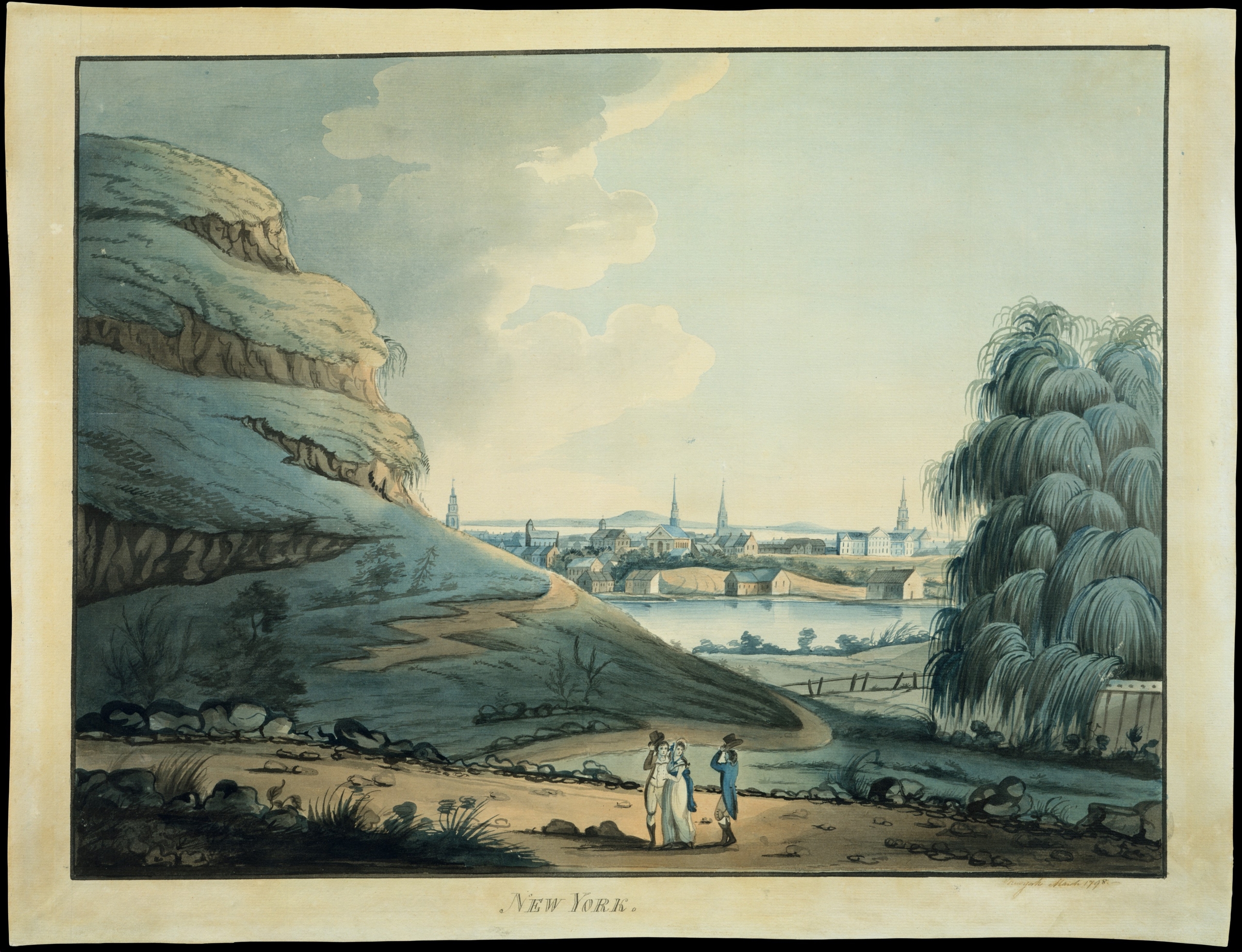B. The Life and Work of Rebecca Salome Foster
2. New York City in the Late 19th Century

The world in which Mrs. Foster pursued her vocation was one that had undergone, and was still in the midst of, profound and dramatic changes. In 1800, the population of the United States was 5,308,483 and that of New York State 589,051.[34] There were only 60,515 inhabitants of New York County in that year.[35] In the years that followed, the United States underwent substantial industrialization, particularly in the North. In the aftermath of upheavals in Europe in and around 1848 and the Great Famine in Ireland, and in the decades after the Civil War, vast waves of immigrants came to the United States. By 1850, there were 3,097,394 persons resident in New York State.[36] Ten years later, the population of New York City had grown to 813,669, of whom 47 % were immigrants.[37] By 1900, the population of Manhattan had ballooned to 2,050,600,[38] and of these, 850,884 were foreign-born.[39]
Many of these immigrants were impoverished and lacked skill in English. As we note further later, a large number lived in shabby and unhealthy tenements in crowded districts in Manhattan. Among the byproducts of this harsh environment were chronic poverty, desperation, and crime, which evils affected large numbers of persons whom Mrs. Foster encountered in her work.

As we will see, Mrs. Foster was an extraordinary woman in many respects, whether judged by the standards of her time or even our own. One thing that certainly set her apart from most other women of her day is that she became fully occupied by her work, so that it truly became for her a vocation (even though, as we shall note, she was not paid). Some women of means and education were certainly striking out into the world in various ways in the second half of the nineteenth century, examples of which can be found in the first Women’s Rights Convention at Seneca Falls, New York (1848), with its famous Declaration of Sentiments;[40] the Woman’s Christian Temperance Union, which was founded in Cleveland, Ohio in 1874, had over 200,000 members by 1892, and was the largest and most influential women’s organization that had existed until that time;[41] women’s clubs and the Chautauqua Movement;[42] and the women’s suffrage movement, which culminated in the 19th Amendment to the United States Constitution extending to women the right to vote (1920). But at the time Mrs. Foster was doing her work, very few women of her station were leaving their homes for outside employment. In the United States in 1900, four out of five women aged 16 and over did not work outside the home.[43] Those who did often lacked the financial means to do otherwise and were commonly limited to occupations as teachers, nurses and the like, and frequently were compelled to work by serious, even dire economic necessity, such as recent immigrants, widows in a lower economic class, etc. Employment “in the well-to-do classes of society [was] exceptional.”[44]
And of all those who did work, very few indeed voluntarily chose to shoulder the burdens Mrs. Foster assumed and engage in employment in the challenging environments in which she spent her days.
Table of Contents
A. Introduction
B. The Life and Work of Rebecca Salome Foster
- The Backgrounds of Rebecca and John A. Foster
- New York City in the Late 19th Century
- How Mrs. Foster’s Work Began
- What Mrs. Foster Did for Prisoners, Their Families, the Courts, and Others
- Mrs. Foster’s Work in Her Own Words
- Funding the Work
- Providing Legal Assistance
- Traveling Throughout the City and Elsewhere
- The Tombs and “Five Points”
- How Mrs. Foster’s Work Came to an End
D. What Happened to the Memorial
E. The Foster Family and a Home for the Marble Relief
G. Endnotes
